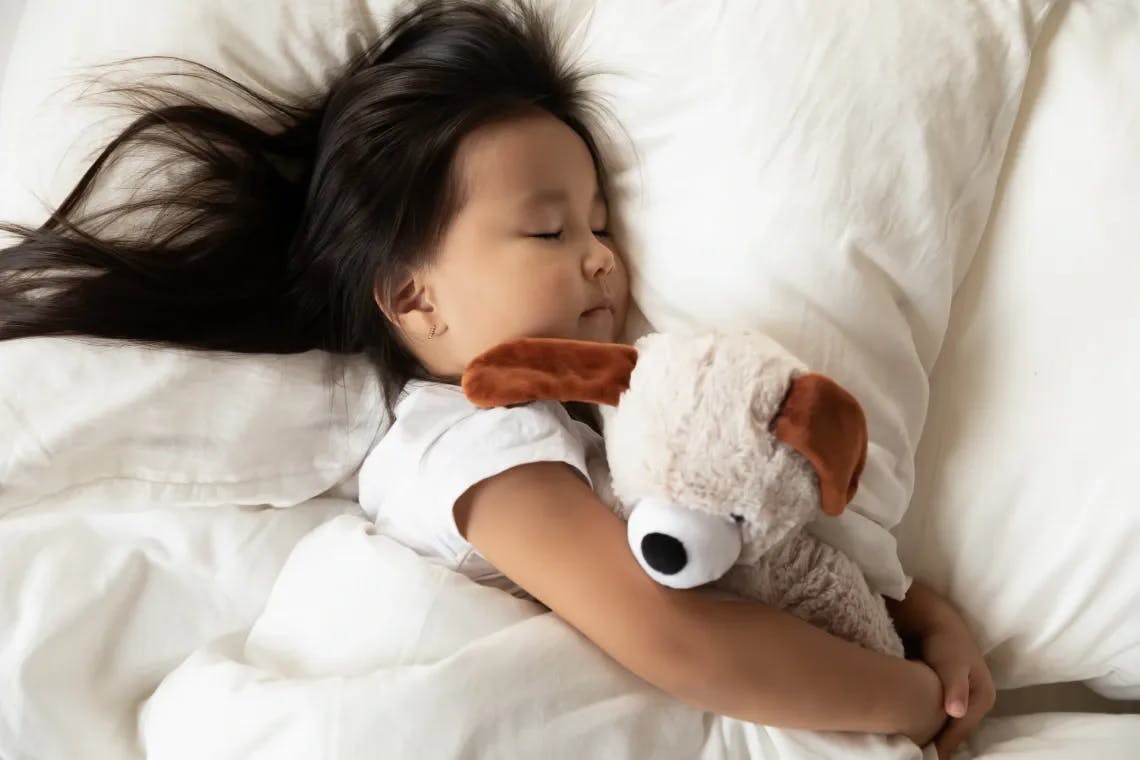
What Medicine Can I Use for My Child’s Nighttime Allergies?
Nighttime allergies can cause a major disruption when your child is trying to sleep. Whether they’re allergic to mold, pollen, dust mites, or the family dog, your child’s allergies aren’t fun for anyone in the family.1 Often allergies are passed down genetically, which means you might already be familiar with the discomfort of allergies yourself!1 Luckily there are plenty of ways to treat your child’s nighttime allergies, including with allergy medications like antihistamines, eye drops, and nasal sprays.1 However, it’s important to note that children can be more sensitive to medication than adults, so always read the package label to make sure you’re giving your child the correct dosage.2
Types of Allergy Medication for Children
If your child is experiencing nighttime allergies, talk to their doctor about the options. Your child’s pediatrician will likely recommend an antihistamine, eye drops, or nasal spray, depending on the type and severity of nighttime allergies that your child is experiencing.1
Antihistamines
Antihistamines work to treat allergies by blocking the effect that histamines have on the body.3 When the body encounters an allergen, the immune system responds by releasing histamines, which are chemicals that cause allergy symptoms.3 Antihistamine allergy medication can help treat symptoms including itchy eyes, hives, runny nose, swelling nasal passages, congestion, and sneezing.3 As mentioned above, always read the product label to make sure a medication is suitable for children—antihistamines may cause your child to experience excessive drowsiness or excitability at certain dosages.2
Eye Drops
Antihistamines are available in eye drop form, which is another possibility for treating allergies in children.1,3 If your child’s nighttime allergy attacks include experiencing itchy or runny eyes, talk to your doctor about treating their allergies with antihistamine eye drops.
Nasal Spray
A third option for treating your child’s nighttime allergies is a nasal spray that contains the active ingredient fluticasone, like Children’s FLONASE Sensimist. Over-the-counter (OTC) fluticasone nasal sprays can help relieve rhinitis and allergy symptoms including runny or stuffy nose and itchy or watery eyes.4 Nasal spray should only be used in the nose—it is not suitable for use in the eyes or mouth.4
How to Use Children’s FLONASE for Your Child’s Nighttime Allergy Attacks
If your child is experiencing disruptive nighttime allergy attacks, Children’s FLONASE Sensimist can help. To use Children’s FLONASE Sensimist to help relieve your child’s nighttime allergy attacks, follow these instructions:
Step 1: Use a pair of scissors to open the Sensimist packaging. Cut along the top, side, and bottom of the package (look for the scissors icon!)
Step 2: Remove the Sensimist bottle and instructions from the package.
Step 3: Vigorously shake the bottle.
Step 4: Using your thumb and forefinger, squeeze the sides of the cap and pull it straight off the bottle.
Step 5: To prime the medication, aim the spray nozzle away from your face and pump until a fine mist appears. Now the medication is primed and ready to be used.
Step 6: Instruct your child to blow their nose to clear their nasal passages.
Step 7: Have your child tilt their head forward while keeping the bottle upright and insert the tip of the bottle into your child’s nose.
Step 8: Instruct your child to sniff gently and breathe out through their mouth while you press the button on the bottle all the way to release the mist.
Step 9: Repeat Step 8 in the other nostril.
Step 10: Wipe the spray nozzle off with a clean tissue and replace the cap.
Children’s FLONASE Senismist should keep your child’s allergies under control all day and all night. Consult the package label to make sure you’re following the proper dosing instructions.
More Ways to Help Relieve Your Child’s Nighttime Allergies
While allergy medication can often provide much-needed relief for your child’s nighttime allergies, pairing medication with other preventative and at-home care methods can help ensure your child is getting the allergy relief they need.
- If your child experiences seasonal allergies or hay fever, minimize their exposure to allergens by staying inside when allergen levels are high.2 Keeping the windows in the house and car closed and using the air conditioner can also help lower your child’s exposure to airborne allergens.2
- Remove the carpets, rugs, and heavy curtains from your child’s room, as they can collect dust that may cause your child to experience allergy symptoms.5
- Seal pillows and mattresses with covers that protect against dust mites.5
- If your child is allergic to animals, keep the family pet out of certain areas of the house, like your child’s bedroom.5
- Some doctors recommend immunotherapy allergy shots to help reduce sensitivity to dust, mold, animals, pollen, and other allergens. Talk to your child’s pediatrician about the options available.1,2
Your child’s nighttime allergy attacks may be unavoidable, but there are plenty of solutions to help keep them under control. Get more tips on finding relief and living with allergies from the experts at FLONASE.
Source Citations:
- Kids and Allergies. NEMOURS KidsHealth. https://kidshealth.org/en/parents/allergy.html. Accessed April 20, 2023.
- Allergy Relief for Your Child. U.S. Food and Drug Administration. https://www.fda.gov/consumers/consumer-updates/allergy-relief-your-child. Accessed April 20, 2023.
- Antihistamines for allergies. MedlinePlus. https://medlineplus.gov/ency/patientinstructions/000549.htm. Accessed April 20, 2023.
- Fluticasone Nasal Spray. MedlinePlus. https://medlineplus.gov/druginfo/meds/a695002.html. Accessed April 20, 2023.
- Allergies. NEMOURS TeensHealth. https://kidshealth.org/en/teens/allergies.html. Accessed April 20, 2023.